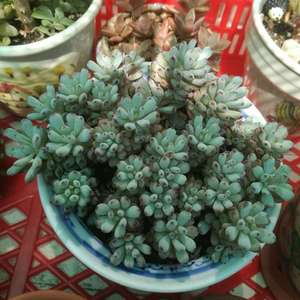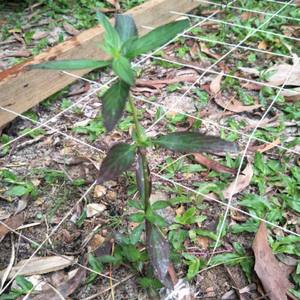文章
Miss Chen
2018年08月18日

Over 2,300 camellia (Camellia spp.) cultivars are registered with the American Camellia Society, many of them from the popular Japanese camellia (Camellia japonica) and Sasanqua camellia (Camellia sasanqua and two closely related species, Camellia hiemalis and Camellia vernalis, both hardy in U.S. Department of Agriculture plant hardiness zones 7 through 9) groups. Some camellia varieties are adaptable to everything from drought conditions to cold climates, with bloom-time ranges from October to April, depending on species and cultivar.

Japanese Camellias
The rose-like flowers of Japanese camellias are a welcome sight in the winter months when many flower species are lying dormant. Camellia leaves are always bright, glossy evergreen, but the flowers range in color from white, through many shades of pink and red with variegated colored varieties of each. Bob Hope (Camellia japonica 'Bob Hope') has large, deep red, semi-double ruffled flowers and bright yellow stamens; it is a mid-season bloomer, flowering in winter, and thrives in USDA zones 8 through 10. Carter's Sunburst (Camellia japonica 'Carter's Sunburst'), also hardy in USDA zones 8 through 10, has pink and red-streaked variegated flowers that also come into bloom in the winter months. Depending on the cultivar, Japanese camellias are hardy throughout USDA zones 7 through 10.
Sasanqua Camellias
This species group of camellias vary in form from dense, bushy, upright plants to low-growing, spreading varieties. Their leaves are smaller than Japanese camellias, and the flowers are exceptionally fragrant. Camellia sasanqua 'Chansonette' can be grown in USDA zones 7 through 10, with a blooming period of fall through winter with pink, double-petaled flowers. It is a low spreading ground-cover camellia with a height of 2 to 3 feet and 8 feet in diameter. Bonanza (Camellia sasanqua 'Bonanza') thrives in the same hardiness zones with bright scarlet peony-form blossoms early in the bloom season, in autumn. Depending on the cultivar, Sasanqua camellias are hardy throughout USDA zones 7 through 10.
Camellia Hybrids
Long Island Pink (Camellia x 'Long Island Pink') is a camellia hybrid that produces single-petaled pink flowers in fall. It is a slow-growing bush that reaches 10 feet in height and 8 feet in diameter in USDA zones 6 through 9. The glossy green foliage emerges in bronze, and this camellia species is often used as a hedge, or as an espalier plant along a wall. Another popular camellia hybrid is the pure white-blossomed Quintessence (Camellia x 'Quintessence') which thrives in USDA zones 8 through 10 and does well as a small shrub or ground-cover. Its single white flowers with pink blush at the petal margins generally bloom early to mid-season, October to December. Depending on the cultivar, hybrid camellias are hardy in USDA zones 7 through 10.

Bloom Failure
Camellias set more buds than come open, but under-watering may cause bud drop or buds that fail to open and bloom. Bloom failure may also be caused by too much direct sun or harsh winds. Camellias prefer growing conditions that offer filtered sunlight, such as given by the canopy of a large tree.
Blossom failure may also be caused by fluctuating temperatures. If the temperature drops to freezing, cover the camellia bush with a light blanket or heat-retaining plant cover. Secure it at soil level to take advantage of ground heat, and remove cover in the morning.

Japanese Camellias
The rose-like flowers of Japanese camellias are a welcome sight in the winter months when many flower species are lying dormant. Camellia leaves are always bright, glossy evergreen, but the flowers range in color from white, through many shades of pink and red with variegated colored varieties of each. Bob Hope (Camellia japonica 'Bob Hope') has large, deep red, semi-double ruffled flowers and bright yellow stamens; it is a mid-season bloomer, flowering in winter, and thrives in USDA zones 8 through 10. Carter's Sunburst (Camellia japonica 'Carter's Sunburst'), also hardy in USDA zones 8 through 10, has pink and red-streaked variegated flowers that also come into bloom in the winter months. Depending on the cultivar, Japanese camellias are hardy throughout USDA zones 7 through 10.
Sasanqua Camellias
This species group of camellias vary in form from dense, bushy, upright plants to low-growing, spreading varieties. Their leaves are smaller than Japanese camellias, and the flowers are exceptionally fragrant. Camellia sasanqua 'Chansonette' can be grown in USDA zones 7 through 10, with a blooming period of fall through winter with pink, double-petaled flowers. It is a low spreading ground-cover camellia with a height of 2 to 3 feet and 8 feet in diameter. Bonanza (Camellia sasanqua 'Bonanza') thrives in the same hardiness zones with bright scarlet peony-form blossoms early in the bloom season, in autumn. Depending on the cultivar, Sasanqua camellias are hardy throughout USDA zones 7 through 10.
Camellia Hybrids
Long Island Pink (Camellia x 'Long Island Pink') is a camellia hybrid that produces single-petaled pink flowers in fall. It is a slow-growing bush that reaches 10 feet in height and 8 feet in diameter in USDA zones 6 through 9. The glossy green foliage emerges in bronze, and this camellia species is often used as a hedge, or as an espalier plant along a wall. Another popular camellia hybrid is the pure white-blossomed Quintessence (Camellia x 'Quintessence') which thrives in USDA zones 8 through 10 and does well as a small shrub or ground-cover. Its single white flowers with pink blush at the petal margins generally bloom early to mid-season, October to December. Depending on the cultivar, hybrid camellias are hardy in USDA zones 7 through 10.

Bloom Failure
Camellias set more buds than come open, but under-watering may cause bud drop or buds that fail to open and bloom. Bloom failure may also be caused by too much direct sun or harsh winds. Camellias prefer growing conditions that offer filtered sunlight, such as given by the canopy of a large tree.
Blossom failure may also be caused by fluctuating temperatures. If the temperature drops to freezing, cover the camellia bush with a light blanket or heat-retaining plant cover. Secure it at soil level to take advantage of ground heat, and remove cover in the morning.
0
0
文章
Miss Chen
2018年08月16日

Ferns are among the oldest types of plants still surviving on the planet, and some species have remained virtually unchanged for tens of millions of years. They are also one of the most diverse groups of plants, with thousands of species spread across most temperate parts of the globe.

Ancient Ferns
During the Carboniferous Period, which ended about 300 million years ago, ferns were the dominant form of plant life on Earth, and although many ancient ferns were nearly identical to fern species alive today, the Carboniferous forests were home to towering tree ferns that created a canopy under which smaller ferns grew.
Although modern tree ferns, which are much like their ancient ancestors, have structures similar to other ferns, they grow to immense sizes and resemble full-size tropical trees. The Australian tree fern (Sphaeropteris cooperi) grows in U.S. Department of Agriculture plant hardiness zones 10b through 11, and it can be grown indoors in a container. This fern grows a single trunk that can be up to 12 inches in diameter, and it unfurls fronds that are between 12 and 18 inches long. This tree fern can grow 15 to 30 feet tall.
Colorful Ferns
Many fern species grow in the shady, moist environments under forest canopies and blend into the undergrowth, but not all ferns are green. Some species are nearly as showy as vibrant garden flowers. The new growth of some ferns is strikingly orange, red or yellow, and some species have brilliantly colored stems or variegated leaves.
The Japanese painted fern (Athyrium niponicum var. "Pictum") is a delicate, low-growing fern that grows in USDA zones 5 through 8. Its red-purple leaf stems contrast with the silvery sheen of its leaflets, and it grows in 8- to 12-inch-tall clumps that hug the soil.
Unfurling Fronds
Fern leaves are called fronds, and their structure is different than other plants. Fern fronds usually sprout directly from the plant's underground structure without any stem, and the fronds gradually unroll from base to tip, forming the familiar "fiddlehead" shape in the process.
Fern fronds are made up of a central stem called a rachis and small leaflets that grow along the rachis. In some species, the frond is divided, with a smaller rachis branching from the central stem; then an even smaller rachis branches from that one, until the frond is divided as many as four or five times.

Spores, Not Seeds
Most flowering plants reproduce through seeds that develop from flowers, but ferns have neither flowers nor seeds. It's their lack of seeds that sets them apart from both flowering plants and cone-bearing plants.
The fern's life cycle begins when the adult fern plant, called a sporophyte, produces and sheds spores, tiny seedlike capsules that are dispersed by water or wind to a location away from the parent plant. In the new spot, the spore germinates and produces a new plant, called a gametophyte. The gametophyte, which is often tiny and inconspicuous compared to the sporophyte, then produces both egg and sperm cells. The sperm cells fertilize the egg cells, and the fertilized egg grows into a new sporophyte.

Ancient Ferns
During the Carboniferous Period, which ended about 300 million years ago, ferns were the dominant form of plant life on Earth, and although many ancient ferns were nearly identical to fern species alive today, the Carboniferous forests were home to towering tree ferns that created a canopy under which smaller ferns grew.
Although modern tree ferns, which are much like their ancient ancestors, have structures similar to other ferns, they grow to immense sizes and resemble full-size tropical trees. The Australian tree fern (Sphaeropteris cooperi) grows in U.S. Department of Agriculture plant hardiness zones 10b through 11, and it can be grown indoors in a container. This fern grows a single trunk that can be up to 12 inches in diameter, and it unfurls fronds that are between 12 and 18 inches long. This tree fern can grow 15 to 30 feet tall.
Colorful Ferns
Many fern species grow in the shady, moist environments under forest canopies and blend into the undergrowth, but not all ferns are green. Some species are nearly as showy as vibrant garden flowers. The new growth of some ferns is strikingly orange, red or yellow, and some species have brilliantly colored stems or variegated leaves.
The Japanese painted fern (Athyrium niponicum var. "Pictum") is a delicate, low-growing fern that grows in USDA zones 5 through 8. Its red-purple leaf stems contrast with the silvery sheen of its leaflets, and it grows in 8- to 12-inch-tall clumps that hug the soil.
Unfurling Fronds
Fern leaves are called fronds, and their structure is different than other plants. Fern fronds usually sprout directly from the plant's underground structure without any stem, and the fronds gradually unroll from base to tip, forming the familiar "fiddlehead" shape in the process.
Fern fronds are made up of a central stem called a rachis and small leaflets that grow along the rachis. In some species, the frond is divided, with a smaller rachis branching from the central stem; then an even smaller rachis branches from that one, until the frond is divided as many as four or five times.

Spores, Not Seeds
Most flowering plants reproduce through seeds that develop from flowers, but ferns have neither flowers nor seeds. It's their lack of seeds that sets them apart from both flowering plants and cone-bearing plants.
The fern's life cycle begins when the adult fern plant, called a sporophyte, produces and sheds spores, tiny seedlike capsules that are dispersed by water or wind to a location away from the parent plant. In the new spot, the spore germinates and produces a new plant, called a gametophyte. The gametophyte, which is often tiny and inconspicuous compared to the sporophyte, then produces both egg and sperm cells. The sperm cells fertilize the egg cells, and the fertilized egg grows into a new sporophyte.
0
0
文章
Miss Chen
2018年08月14日

Lilies (Lilium spp.) produce tall stems lined with many lance-like leaves and produce a cluster of flowers in late spring to early fall, depending on species. Over 100 lily species exist and hundreds more hybrid cultivars, such as those known as LA Hybrid, Asiatic or Orienpet lilies. Deadheading is the process of trimming off old, withering flowers with the hope of encouraging reblooming. Deadheading lilies is for aesthetic purposes only; lilies do not rebloom once their primary flowering display ends.

Reasons to Deadhead
A gardener does not need to deadhead lilies in order for the plant to remain healthy. People concerned with tidy garden appearance may choose to trim off old, spent lily flowers from the stem tips to make the plant look better. Lily flowers that are not cut off will develop into a three-chamber capsule that forms seeds. If you want the clump of lily plants to grow more robust, cut off the seed capsules so the plant energy goes into developing larger bulbs in the ground. Otherwise, resources are put into producing seeds.
How to Deadhead Lilies
The structure and form of flowers on lilies vary by species, so take the time to examine the flower tip on plant stems before deadheading. You may opt to pluck off old lily blossoms one at a time by snipping them off where the short stem attaches to the main flower stem or stalk. Or, you can wait for all flowers in the lily cluster to wither before making one cut to trim off the upper reaches of the lily stalk.
Caveats
Do not cut off more of the main leafy stem stalk of a lily than necessary to remove the old flowering tip. You want as many leaves to remain as possible, since they make carbohydrates from sunlight that replenishes and enlarges the underground lily bulbs. Lily bulbs produce daughter bulbs at their base during the summer, thereby increasing the clump. In subsequent years, multiple large lily bulbs grow and produce more flowers than a lone lily bulb.

Insights on Other Plants Called Lily
Horticulturists refer to species in the genus Lilium as "true lilies." Other members in the larger lily family, Liliaceae, and other plant families are also given common names of lily. Daylily, Peruvian lily, waterlily, lily-of-the-Nile, lily-of-the-valley, calla lily and toad lily are examples. These types of "false" lilies may or may not benefit from deadheading -- it depends on the individual species.

Reasons to Deadhead
A gardener does not need to deadhead lilies in order for the plant to remain healthy. People concerned with tidy garden appearance may choose to trim off old, spent lily flowers from the stem tips to make the plant look better. Lily flowers that are not cut off will develop into a three-chamber capsule that forms seeds. If you want the clump of lily plants to grow more robust, cut off the seed capsules so the plant energy goes into developing larger bulbs in the ground. Otherwise, resources are put into producing seeds.
How to Deadhead Lilies
The structure and form of flowers on lilies vary by species, so take the time to examine the flower tip on plant stems before deadheading. You may opt to pluck off old lily blossoms one at a time by snipping them off where the short stem attaches to the main flower stem or stalk. Or, you can wait for all flowers in the lily cluster to wither before making one cut to trim off the upper reaches of the lily stalk.
Caveats
Do not cut off more of the main leafy stem stalk of a lily than necessary to remove the old flowering tip. You want as many leaves to remain as possible, since they make carbohydrates from sunlight that replenishes and enlarges the underground lily bulbs. Lily bulbs produce daughter bulbs at their base during the summer, thereby increasing the clump. In subsequent years, multiple large lily bulbs grow and produce more flowers than a lone lily bulb.

Insights on Other Plants Called Lily
Horticulturists refer to species in the genus Lilium as "true lilies." Other members in the larger lily family, Liliaceae, and other plant families are also given common names of lily. Daylily, Peruvian lily, waterlily, lily-of-the-Nile, lily-of-the-valley, calla lily and toad lily are examples. These types of "false" lilies may or may not benefit from deadheading -- it depends on the individual species.
0
0
文章
Miss Chen
2018年08月12日

There are approximately 300 species of dianthus to choose from, in biennial, annual and perennial varieties. They have colorful blooms in numerous shades of pink, white, red and purple. The blooms open in spring and will last until frost, if provided with the right growing conditions and care. Dianthus are not fussy plants and it takes very little to keep them happy. Plentiful sunlight, sufficient water and regular grooming help ensure that blooms adorn the plants all season long.

Step 1
Plant dianthus in a site that receives full sun at least six hours every day.
Step 2
Place 2 inches of mulch around the plants to keep moisture from evaporating too quickly.
Step 3
Water dianthus when less than 1 inch of rain falls in a week.
Step 4
Feed every month during the growing season with water-soluble fertilizer.
Step 5
Clip the blooms off as they fade.
Step 6
Broadcast a 1-inch layer of compost around the plants each spring if growing perennial or biennial dianthus.

Step 7
Divide perennial dianthus clumps once every three or four years. This is best done in early spring.

Step 1
Plant dianthus in a site that receives full sun at least six hours every day.
Step 2
Place 2 inches of mulch around the plants to keep moisture from evaporating too quickly.
Step 3
Water dianthus when less than 1 inch of rain falls in a week.
Step 4
Feed every month during the growing season with water-soluble fertilizer.
Step 5
Clip the blooms off as they fade.
Step 6
Broadcast a 1-inch layer of compost around the plants each spring if growing perennial or biennial dianthus.

Step 7
Divide perennial dianthus clumps once every three or four years. This is best done in early spring.
0
0
文章
Miss Chen
2018年08月11日

Perennials live for at least three years, although some survive for much longer. Many perennial species die back to the ground in winter and regrow in the spring. To identify purple perennials, note their foliage, form and flower type. Purple perennials add deep to bright color to the landscape, and some species attract pollinating wildlife, such as hummingbirds, butterflies or bees, with their nectar. Plant species that bloom at different times during the growing season for constant color.
Early Bloomers

Early blooming perennials start producing flowers in spring, which lasts from March through May. Purple-flowering species include the bugle weed (Ajuga reptans), a 6- to 9-inch-tall perennial that spreads as a ground cover. Bugle weed blooms with small, purple, blue and white flowers that stand on inflorescences. Flowers have a forked lower petal and attract bees. Turkish veronica (Veronica liwanensis) blooms in late spring with purple to blue flowers on tall racemes. The small blossoms grow from the bottom to the top. Turkish veronica grows to 2 feet tall and has lustrous, evergreen leaves. This perennial can be grown as a spreading ground cover.
Summer Bloomers

The summer blooming season begins in June and lasts through August. The purple coneflower (Echinacea purpurea) produces purple, pink and white daisylike blooms with dark gold centers in summer. The conflower's long-lasting blossoms grow from 2 1/2 to 5 inches in diameter and have 12 to 20 drooping petals. Purple coneflowers have rough leaves, hairy stems and grow from 1 to 3 feet tall. Lavender (Lavandula angustifolia ) blooms through the summer months with fragrant spikes of small, pale to deep purple blossoms. Lavender has aromatic, gray-green foliage and grows from 2 to 3 feet tall. It grows in upright clumps and has stippled leaves that turn silvery in winter.
Late Summer to Fall Bloomers

Late-blooming purple perennials produce flowers from August until September, though sometimes blossoms last until the first killing frost. Catmint (Nepeta spp.) blooms in late summer with tall spikes of violet to blue flowers. This relative of the catnip plant has fragrant flowers and foliage and grows from 12 to 36 inches tall. Russian sage (Perovskia atriplicifolia) flowers from July through October. This aromatic perennial produces tall spikes of purple-blue flowers and grows in an upright form. Russian sage grows from 36 to 60 inches tall and has gray-green, fragrant foliage.
Season-Long Bloomers

Some purple perennials bloom for much of the growing season. These include the creeping heliotrope (Heliotropium amplexicaule), which flowers from summer through fall. This spreading plant produces clusters of tiny, tublular, blue to purple blossoms and grows from 6 to 12 inches tall. Bergamot (Monarda hybrids) bloom all summer long with purple, red or pink flowers. This perennial's flowers have spiky, thin petals and upright stamens. Bergamot grows from 2 to 4 feet tall and attracts bees, hummingbirds and butterflies.
Early Bloomers

Early blooming perennials start producing flowers in spring, which lasts from March through May. Purple-flowering species include the bugle weed (Ajuga reptans), a 6- to 9-inch-tall perennial that spreads as a ground cover. Bugle weed blooms with small, purple, blue and white flowers that stand on inflorescences. Flowers have a forked lower petal and attract bees. Turkish veronica (Veronica liwanensis) blooms in late spring with purple to blue flowers on tall racemes. The small blossoms grow from the bottom to the top. Turkish veronica grows to 2 feet tall and has lustrous, evergreen leaves. This perennial can be grown as a spreading ground cover.
Summer Bloomers

The summer blooming season begins in June and lasts through August. The purple coneflower (Echinacea purpurea) produces purple, pink and white daisylike blooms with dark gold centers in summer. The conflower's long-lasting blossoms grow from 2 1/2 to 5 inches in diameter and have 12 to 20 drooping petals. Purple coneflowers have rough leaves, hairy stems and grow from 1 to 3 feet tall. Lavender (Lavandula angustifolia ) blooms through the summer months with fragrant spikes of small, pale to deep purple blossoms. Lavender has aromatic, gray-green foliage and grows from 2 to 3 feet tall. It grows in upright clumps and has stippled leaves that turn silvery in winter.
Late Summer to Fall Bloomers

Late-blooming purple perennials produce flowers from August until September, though sometimes blossoms last until the first killing frost. Catmint (Nepeta spp.) blooms in late summer with tall spikes of violet to blue flowers. This relative of the catnip plant has fragrant flowers and foliage and grows from 12 to 36 inches tall. Russian sage (Perovskia atriplicifolia) flowers from July through October. This aromatic perennial produces tall spikes of purple-blue flowers and grows in an upright form. Russian sage grows from 36 to 60 inches tall and has gray-green, fragrant foliage.
Season-Long Bloomers

Some purple perennials bloom for much of the growing season. These include the creeping heliotrope (Heliotropium amplexicaule), which flowers from summer through fall. This spreading plant produces clusters of tiny, tublular, blue to purple blossoms and grows from 6 to 12 inches tall. Bergamot (Monarda hybrids) bloom all summer long with purple, red or pink flowers. This perennial's flowers have spiky, thin petals and upright stamens. Bergamot grows from 2 to 4 feet tall and attracts bees, hummingbirds and butterflies.
0
0
文章
Miss Chen
2018年08月07日

Bamboo plants are woody members of the grass family and consist of vertical, above-ground culms, and underground roots and rhizomes. A successful propagation must recreate all these parts. While reproduction from seed is the easiest way for the species to reproduce, bamboo plants do not produce many viable seeds. Consequently, bamboo is more commonly propagated by vegetative means. There are several types of vegetative propagation, and each have various advantages and drawbacks. Culm cutting, branch cutting, trench layering and marcotting propagation techniques essentially involve cutting a part off a bamboo in order to reroot it.
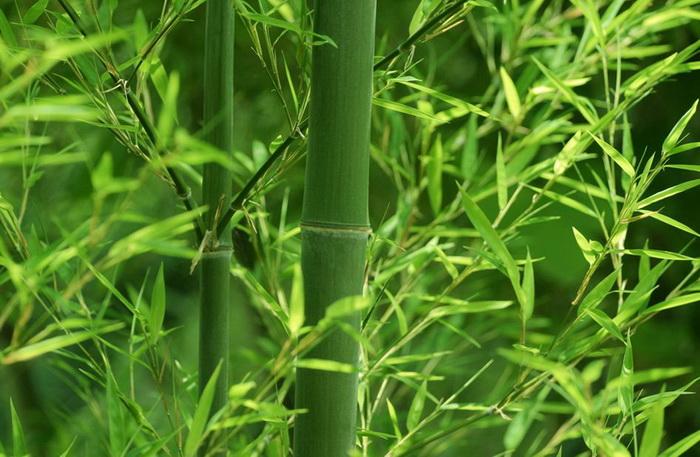
Culm Cutting
The culm cutting technique is used to successfully propagate most of the economically significant species of bamboo at a much faster rate than seed plantings. Begin by selecting only healthy culms 2 to 3 years in age. Cut the culm at ground level or slightly above the first node. Remove all leaves and small side branches. Use this culm to prepare several cuttings 2 to 3 nodes in length, leaving about 4 inches on each side. Place cuttings in a sandy, starting medium. Bury about 5 inches deep in dirt, totally covering up at least one node. New growth should appear in about 6 weeks.
Branch Cutting
Branch cutting propagation is a process that is very similar to culm cutting, but with branches. It works best with thick-walled bamboo cultivars. Select branches from 1- to 3-year-old culms. With both culm cutting and branch cuttings, rooting hormone applications will help produce better and faster results. Place branches in a growing medium upright or at a 20-degree angle. Special equipment like sand beds and mist chambers are often used to improve sprouting.
Trench Layering
Dig a long trench about 6 inches deep, long enough to accommodate a culm, lying horizontal, approximately 20 nodes long. Select a 2-year-old culm, stripping it of small branches and leaves. Cut through the culm, leaving about two thirds of its diameter. Place it in well-prepared soil, so that buds on the culm are in a lateral position. Shoots should start to appear at each node after about 3 months.

Marcotting
Marcotting is a bamboo propagation technique that is similar to trench layering. However, culms are not cut, but bent to a degree that will allow growers to physically reach plant nodes. In addition, propagation does not take place in the soil; instead it takes place in the air. A mixture of soil and rooting hormones are placed at each node. These materials are wrapped and physically bound to bamboo nodes using coconut fiber. Rooted nodes are later separated from the stem to become independent plants.

Culm Cutting
The culm cutting technique is used to successfully propagate most of the economically significant species of bamboo at a much faster rate than seed plantings. Begin by selecting only healthy culms 2 to 3 years in age. Cut the culm at ground level or slightly above the first node. Remove all leaves and small side branches. Use this culm to prepare several cuttings 2 to 3 nodes in length, leaving about 4 inches on each side. Place cuttings in a sandy, starting medium. Bury about 5 inches deep in dirt, totally covering up at least one node. New growth should appear in about 6 weeks.
Branch Cutting
Branch cutting propagation is a process that is very similar to culm cutting, but with branches. It works best with thick-walled bamboo cultivars. Select branches from 1- to 3-year-old culms. With both culm cutting and branch cuttings, rooting hormone applications will help produce better and faster results. Place branches in a growing medium upright or at a 20-degree angle. Special equipment like sand beds and mist chambers are often used to improve sprouting.
Trench Layering
Dig a long trench about 6 inches deep, long enough to accommodate a culm, lying horizontal, approximately 20 nodes long. Select a 2-year-old culm, stripping it of small branches and leaves. Cut through the culm, leaving about two thirds of its diameter. Place it in well-prepared soil, so that buds on the culm are in a lateral position. Shoots should start to appear at each node after about 3 months.

Marcotting
Marcotting is a bamboo propagation technique that is similar to trench layering. However, culms are not cut, but bent to a degree that will allow growers to physically reach plant nodes. In addition, propagation does not take place in the soil; instead it takes place in the air. A mixture of soil and rooting hormones are placed at each node. These materials are wrapped and physically bound to bamboo nodes using coconut fiber. Rooted nodes are later separated from the stem to become independent plants.
0
0
文章
Miss Chen
2018年08月07日

Many species of hibiscus plants or shrubs exist, some of which are perennial or hardy and others are tropical hibiscuses that are grown as annuals or as houseplants in nontropical hardiness zones where winters consist of several months of subfreezing temperatures. Hibiscuses are very fast-growing plants, so splitting or dividing them at the root is an effective way to promote new and healthier growth and provide plants with more room to spread out.
Hibiscus Types

Tropical hibiscuses are characterized by their dark-green, almost glossy leaf color and flowers in bright colors such as orange, yellow and red. These hibiscuses are not hardy in places where freezes last longer than a few hours. Hardy or perennial hibiscuses tolerate freezing temperatures, and with the exception of rose of Sharon, a variety of hibiscus that flowers off the previous year's woody growth, these plants die down to the ground at winter.
Why Divide Hibiscuses?

Hibiscuses are fast-growing shrubs known for their deep and extensive root systems. Typical indicators that plants need dividing include sparse foliage at the bottom of plants, bare spots in the center and fewer blooms and smaller flowers. These are indications that the massive root ball is not able to provide sufficient nourishment to all parts of the plant.
When to Divide

The general rule regarding the division of perennials is that perennials that bloom in spring and summer are divided in fall, and perennials that bloom in fall are divided in spring. Most perennials require dividing every three to five years. Hibiscuses are a bit different because in warmer climates, hardy hibiscuses can bloom from spring until frost, and in tropical areas, tropical hibiscuses (Hibiscus rosa-sinensis) may bloom year-round. Ideally, you should not divide plants when they are flowering. Most perennial hardy hibiscuses generate new growth in spring, so the best time to divide them is early in spring just after the first new growth emerges. Because rose of Sharon (Hibiscus syriacus) plants develop new growth and bloom off the previous year's woody stems, divide these plants in fall once they finish blooming and begin to enter dormancy. Divide tropical hibiscuses when they are not blooming or when dormant when grown as houseplants.
How to Divide

To divide hibiscuses planted in the ground, dig deep into the ground so you can remove the entire root ball from the planting hole. Extensive root systems will likely render container-grown plants root or pot bound. Tap the bottom of the pot to free the root ball from the pot. Once the plants are out of the ground or container, spray the root ball with water to remove as much soil as possible. Use a sharp pruning knife or saw to cut the root ball into smaller divisions. Plant the newly divided plant sections immediately and water deeply. Continue to water regularly to ensure that new divisions establish themselves.
Hibiscus Types

Tropical hibiscuses are characterized by their dark-green, almost glossy leaf color and flowers in bright colors such as orange, yellow and red. These hibiscuses are not hardy in places where freezes last longer than a few hours. Hardy or perennial hibiscuses tolerate freezing temperatures, and with the exception of rose of Sharon, a variety of hibiscus that flowers off the previous year's woody growth, these plants die down to the ground at winter.
Why Divide Hibiscuses?

Hibiscuses are fast-growing shrubs known for their deep and extensive root systems. Typical indicators that plants need dividing include sparse foliage at the bottom of plants, bare spots in the center and fewer blooms and smaller flowers. These are indications that the massive root ball is not able to provide sufficient nourishment to all parts of the plant.
When to Divide

The general rule regarding the division of perennials is that perennials that bloom in spring and summer are divided in fall, and perennials that bloom in fall are divided in spring. Most perennials require dividing every three to five years. Hibiscuses are a bit different because in warmer climates, hardy hibiscuses can bloom from spring until frost, and in tropical areas, tropical hibiscuses (Hibiscus rosa-sinensis) may bloom year-round. Ideally, you should not divide plants when they are flowering. Most perennial hardy hibiscuses generate new growth in spring, so the best time to divide them is early in spring just after the first new growth emerges. Because rose of Sharon (Hibiscus syriacus) plants develop new growth and bloom off the previous year's woody stems, divide these plants in fall once they finish blooming and begin to enter dormancy. Divide tropical hibiscuses when they are not blooming or when dormant when grown as houseplants.
How to Divide

To divide hibiscuses planted in the ground, dig deep into the ground so you can remove the entire root ball from the planting hole. Extensive root systems will likely render container-grown plants root or pot bound. Tap the bottom of the pot to free the root ball from the pot. Once the plants are out of the ground or container, spray the root ball with water to remove as much soil as possible. Use a sharp pruning knife or saw to cut the root ball into smaller divisions. Plant the newly divided plant sections immediately and water deeply. Continue to water regularly to ensure that new divisions establish themselves.
0
0
文章
Miss Chen
2018年07月29日

Long-lived, undemanding in care, and suitable for spreading groundcovers in woodlands and naturalistic gardens, wild geraniums are also known as cranesbills (Geranium spp.). Hundreds of species grow naturally across temperate regions in the Northern Hemisphere. Deep, slender taproots or rhizome stem-roots create clumping plants with lobed leaves that are reminiscent of both maples and ferns. Wild geranium's most ornamental feature is the five-petaled flowers in spring or early summer that are white, blue, violet, lavender or any shade of pink. Do not confuse them with florist geraniums (Pelargonium spp.).

00:49
Post-Flowering Maintenance
Once wild geraniums finishing their first blooming display in late spring or early summer, cut back the entire plants to 3 or 4 inches tall to expose the tiny crown of leaves nestled in the lower leaf stems. Do not cut back the flower stems or entire plants if you want seeds to form and scatter in a newly planted area. The seeds will scatter naturally and lead to more plants next spring. In established gardens, trimming away the old flower stems limits the volunteer, weedy seedlings that may pop up all over the place.
Trimming Tip
Clipping back of old flower stems does improve the look of wild geraniums the rest of summer and into fall before frost. Use care when trimming the stems, as you can inadvertently cut off the frilly foliage stems if you do not grasp each flower stem before cutting. In expansive sweeps of wild geraniums in a woodland setting, trimming isn't practical, unless a power weed trimmer is used. Only focus hand-trimming efforts on plants in the more formal perennial border.
Rejuvenation
In regions with long, hot summers, some gardeners will cut back old, tattered and dead leaves in early to midsummer to rejuvenate. Wild geraniums tend to cease flowering in the hottest part of summer anyways, so cutting back old leaves to the base of plants -- just above the small lower rosette of young leaves -- allows the plants to produce lush, green plants with more blossoms in late summer and early fall. In milder winter regions, the foliage of some evergreen species will then often bronze or attain purplish hues and remain attractive if not matted down and suffocated by snow.

Trimming Insight
If your patch of wild geraniums grows in an un-irrigated section of the landscape, or the soil isn't particularly moist and rich in organic matter on its own, cutting back the plants after the first flowering may not prove best. Only cut back plants if the soil will be evenly moist during the hottest part of summer. Postpone or cancel the plant trimming during years with drought, as the loss of tissues and dry soil can weaken or kill the perennial's roots. In dry years, letting flowers go to seed may ensure wild geraniums grow again next year once the drought ends.

00:49
Post-Flowering Maintenance
Once wild geraniums finishing their first blooming display in late spring or early summer, cut back the entire plants to 3 or 4 inches tall to expose the tiny crown of leaves nestled in the lower leaf stems. Do not cut back the flower stems or entire plants if you want seeds to form and scatter in a newly planted area. The seeds will scatter naturally and lead to more plants next spring. In established gardens, trimming away the old flower stems limits the volunteer, weedy seedlings that may pop up all over the place.
Trimming Tip
Clipping back of old flower stems does improve the look of wild geraniums the rest of summer and into fall before frost. Use care when trimming the stems, as you can inadvertently cut off the frilly foliage stems if you do not grasp each flower stem before cutting. In expansive sweeps of wild geraniums in a woodland setting, trimming isn't practical, unless a power weed trimmer is used. Only focus hand-trimming efforts on plants in the more formal perennial border.
Rejuvenation
In regions with long, hot summers, some gardeners will cut back old, tattered and dead leaves in early to midsummer to rejuvenate. Wild geraniums tend to cease flowering in the hottest part of summer anyways, so cutting back old leaves to the base of plants -- just above the small lower rosette of young leaves -- allows the plants to produce lush, green plants with more blossoms in late summer and early fall. In milder winter regions, the foliage of some evergreen species will then often bronze or attain purplish hues and remain attractive if not matted down and suffocated by snow.

Trimming Insight
If your patch of wild geraniums grows in an un-irrigated section of the landscape, or the soil isn't particularly moist and rich in organic matter on its own, cutting back the plants after the first flowering may not prove best. Only cut back plants if the soil will be evenly moist during the hottest part of summer. Postpone or cancel the plant trimming during years with drought, as the loss of tissues and dry soil can weaken or kill the perennial's roots. In dry years, letting flowers go to seed may ensure wild geraniums grow again next year once the drought ends.
0
0
求助
Grace W
2018年07月10日

I got some new succulents yesterday, but I’m not entirelu sure what species they are. I attached some pictures here, so if anybody knows what kind they are, it would be appreciated.
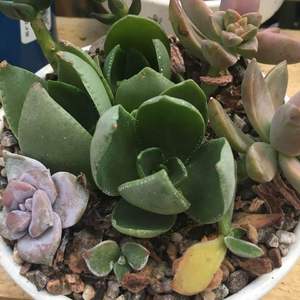
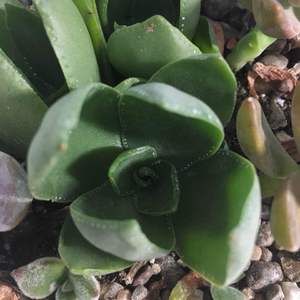

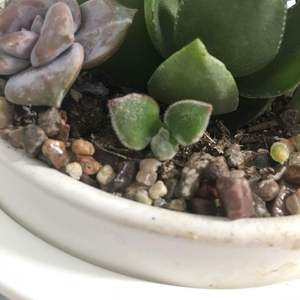

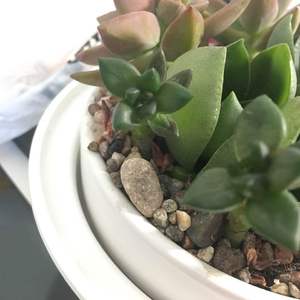






1
0
成长记
Pommy Mommy
2018年07月10日

I now added "SweetPea (Old species PERENNIAL found on my new property)" in my "garden"
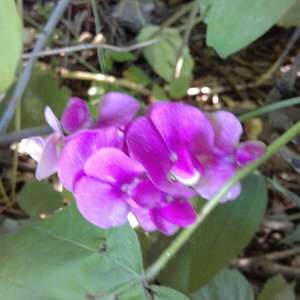

0
0
文章
Miss Chen
2018年07月10日


06Growing Jade Plants
There are several species that are sold under the generic name jade plant. They are all Crassula species. Also called money plants or dollar plants, these are thought to bring good luck.

07Growing Kalanchoe
Although there are many kinds of kalanchoe, the K. blossfeldiana is the most popular. Its sprays of bright flowers make it one of the most desired houseplants around the world.

08Growing Pencil Cactus (Euphorbia tirucalli)
The pencil cactus is actually another Euphorbia species. These plants are grown for their strange, even slightly bizarre foliage.

09Growing Sempervivum
Sometimes called hen and chick plants, Sempervivum succulents are some of the hardiest: hot or cold, light or shade, they can thrive. With good care, these are magnificent accent plants.

10Creating a Succulent Dish Garden
Follow these simple, step-by-step instructions to creating a beautiful dish garden using succulents.
2
1
文章
Miss Chen
2018年06月30日

Aloe vera is commonly grown as a houseplant and gained favor because the gel from its leaves makes a soothing skin salve, although some people are actually irritated by the gel.
There are over 300 species of Aloe vera, but the one most commonly grown as a houseplant is Aloe barbadensis. It has thick, succulent leaves that are plumped up with a watery gel. The leaves grow from the base of the plant, in a rosette, and have jagged edges with flexible spines.

The spiky flowers appear on tall stalks, in shades of yellow, orange and red. Young plants don’t generally flower and aloe grown as a houseplant can take years to produce a flower stalk.
Botanical Name
Aloe barbadensis
Common Name
Aloe Vera
Hardiness Zones
Aloe is only hardy in U.S.D.A. Hardiness Zones: 9 - 11, but it is often grown as a houseplant. In colder zones, you can grow potted aloe vera outdoors for the summer and bring it indoors for the winter.
Mature Plant Size
Plants grow to approximately 2 ft. x 2 ft. Potted plants don't get as large as plants grown in the ground.
Sun Exposure
Outdoors:Full Sun / Partial Shade.
Indoors:Bright Light. Too much hot sun can burn the leaves and give the plant a scraggly appearance.
Bloom Period
Blooming occurs in late spring/early summer. Plants need to be quite mature to begin blooming and may not bloom every year if the leaves are being harvested.
Design Tips for Aloe Vera Plants
Since aloe vera needs a sandy or gravelly soil, when grown outdoors it is best used with other succulents with similar needs.

To blend aloe into a border planting, pot it separately and use as a focal point. Raising the pot to eye level will make it more prominent. Potted aloe grows well on decks and patios where it is handy for emergency burns and bites.
Suggested Aloe Vera Varieties
Most of the plants for sale in greenhouses are hybrids.
Just look for one that has plump, firm leaves with few brown tips. A small plant growing as a tight rosette will adapt best to being potted indoors. If you find a plant that is splitting with lots of offshoots, replant the offshoots as suggested below in Propagating Aloe Vera.
Aloe Vera Growing Tips
Growing Aloe Outdoors: Although aloe can handle a brief frost, it can only be successfully grown outdoors in USDA Zones 9 and above. Here the difficulty is controlling water. Aloe can go for months without water, but too much rainfall will rot the roots. Do not give the plants any supplemental water during the rainy season. Most aloes go dormant in the winter and won’t require any water at all, provided they received sufficient water during the growing season. If your climate is rainy during the winter, consider planting your aloe in gravel or stones. They will allow the water to run off.
Growing Potted Aloe Vera, Indoors or Out:
Soil - Soil needs to be well-draining. In its natural habitat, Aloe generally grows on slopes so that good drainage is guaranteed. To ensure drainage in a pot, you can use a special cactus potting soil or mix in some perlite or coarse sand and make your own mix.
Water: Aloe can handle drought well, but prefers to be watered regularly, allowing the soil to dry out completely between waterings. If the plant is left dry too long, the leaves will shrivel and pucker slightly. They will recover when watered, but prolonged stress, either too much drought or too much water, will cause the leaves to yellow and die.
Caring for Your Aloe Vera Plant
Fertilizer: Aloe vera does not require a high soil fertility. Feeding once a year, in the spring, with a houseplant fertilizer should be sufficient.
Propagating Aloe Vera: Aloe vera can be propagated by seed or by removing and potting the offsets that develop at the base of the plant. Break off each offshoot, making sure there are some roots attached to each piece, and replant the offshoots separately.
Repotting Aloe Vera: Aloe Vera has a rather shallow root system that likes to spread out close to the surface. As the plant grows and needs repotting, move up to a wider pot, rather than a deeper one.
Pests & Diseases
There are not many pests or problems that affect aloe era. Rotting is the most common problem with aloe vera. Pay attention to the wilting of the leaves and water or withhold water accordingly.
Ants are attracted to the center of aloe vera plants. They are known to carry their aphid prey in there with them and the excess moisture can lead to rotting.
Using Aloe Medicinally
To use as a skin salve, remove a lower leaf and slice or break it open. Rub the inside gel onto the skin. For more information about the medicinal uses and effects of aloe vera gel read Health Benefits of Aloe Vera.
There are over 300 species of Aloe vera, but the one most commonly grown as a houseplant is Aloe barbadensis. It has thick, succulent leaves that are plumped up with a watery gel. The leaves grow from the base of the plant, in a rosette, and have jagged edges with flexible spines.

The spiky flowers appear on tall stalks, in shades of yellow, orange and red. Young plants don’t generally flower and aloe grown as a houseplant can take years to produce a flower stalk.
Botanical Name
Aloe barbadensis
Common Name
Aloe Vera
Hardiness Zones
Aloe is only hardy in U.S.D.A. Hardiness Zones: 9 - 11, but it is often grown as a houseplant. In colder zones, you can grow potted aloe vera outdoors for the summer and bring it indoors for the winter.
Mature Plant Size
Plants grow to approximately 2 ft. x 2 ft. Potted plants don't get as large as plants grown in the ground.
Sun Exposure
Outdoors:Full Sun / Partial Shade.
Indoors:Bright Light. Too much hot sun can burn the leaves and give the plant a scraggly appearance.
Bloom Period
Blooming occurs in late spring/early summer. Plants need to be quite mature to begin blooming and may not bloom every year if the leaves are being harvested.
Design Tips for Aloe Vera Plants
Since aloe vera needs a sandy or gravelly soil, when grown outdoors it is best used with other succulents with similar needs.

To blend aloe into a border planting, pot it separately and use as a focal point. Raising the pot to eye level will make it more prominent. Potted aloe grows well on decks and patios where it is handy for emergency burns and bites.
Suggested Aloe Vera Varieties
Most of the plants for sale in greenhouses are hybrids.
Just look for one that has plump, firm leaves with few brown tips. A small plant growing as a tight rosette will adapt best to being potted indoors. If you find a plant that is splitting with lots of offshoots, replant the offshoots as suggested below in Propagating Aloe Vera.
Aloe Vera Growing Tips
Growing Aloe Outdoors: Although aloe can handle a brief frost, it can only be successfully grown outdoors in USDA Zones 9 and above. Here the difficulty is controlling water. Aloe can go for months without water, but too much rainfall will rot the roots. Do not give the plants any supplemental water during the rainy season. Most aloes go dormant in the winter and won’t require any water at all, provided they received sufficient water during the growing season. If your climate is rainy during the winter, consider planting your aloe in gravel or stones. They will allow the water to run off.
Growing Potted Aloe Vera, Indoors or Out:
Soil - Soil needs to be well-draining. In its natural habitat, Aloe generally grows on slopes so that good drainage is guaranteed. To ensure drainage in a pot, you can use a special cactus potting soil or mix in some perlite or coarse sand and make your own mix.
Water: Aloe can handle drought well, but prefers to be watered regularly, allowing the soil to dry out completely between waterings. If the plant is left dry too long, the leaves will shrivel and pucker slightly. They will recover when watered, but prolonged stress, either too much drought or too much water, will cause the leaves to yellow and die.
Caring for Your Aloe Vera Plant
Fertilizer: Aloe vera does not require a high soil fertility. Feeding once a year, in the spring, with a houseplant fertilizer should be sufficient.
Propagating Aloe Vera: Aloe vera can be propagated by seed or by removing and potting the offsets that develop at the base of the plant. Break off each offshoot, making sure there are some roots attached to each piece, and replant the offshoots separately.
Repotting Aloe Vera: Aloe Vera has a rather shallow root system that likes to spread out close to the surface. As the plant grows and needs repotting, move up to a wider pot, rather than a deeper one.
Pests & Diseases
There are not many pests or problems that affect aloe era. Rotting is the most common problem with aloe vera. Pay attention to the wilting of the leaves and water or withhold water accordingly.
Ants are attracted to the center of aloe vera plants. They are known to carry their aphid prey in there with them and the excess moisture can lead to rotting.
Using Aloe Medicinally
To use as a skin salve, remove a lower leaf and slice or break it open. Rub the inside gel onto the skin. For more information about the medicinal uses and effects of aloe vera gel read Health Benefits of Aloe Vera.
0
0
文章
Miss Chen
2018年06月30日


07.Dudleya
Pronunciation:
Traits: Native to the southwestern United States and Baja California, Dudleya is another species that also has a lovely flower, rosette shape, and pattern, with fleshy "petals" in green, red, purple, grey, or a mix. They are sometimes confused with Echeverias, although have completely opposite growing seasons. The white and grey varieties are often covered with a chalky powder, which can wash off or get pitted or spotted when it rains. That's why this type is best kept under a patio or pergola cover.
During the summer these succulents are dormant, and prefer to be kept dry. These easy-to-care-for plants will grow on slopes, in decomposed granite (DG), in rock gardens, and in various types of containers. Flowers emerge on long stalks in shades of red, pink, yellow, and white, and attract hummingbirds.
Try These:
Dudleya brittonii
D. cymosa
D. edulis
D. lanceolata
Chalk Live Forever: D. pulverulent

08.Echeveria
Pronunciation: ech-eh-VER-ee-a
Traits: Native to the Americas, these succulents form beautiful, intricate rosettes in a variety of colors: white, grey, green, pink, and red. Leaves are fleshy and green or grey-green
Try These:
Echeveria elegans
Echeveria imbricata
E. derenbergii
E. haageana
E. Pulvinata

09.Euphorbia
Pronunciation: yoo-FOR-bee-uh
Traits: Also known as spurge, there are more than 1,000 species in the euphorbia family. Some resemble cactus, others are globe-shaped, and some make striking accents in the garden. Probably the best-known euphorbia is the poinsettia (Euphorbia pulcherrima), which can be grown into shrubs or trees in mild climates.
Try These:
Euphorbia echinus
E. burmannii
E. characias 'Humpty Dumpty'
E. grandicornis
E. ingens
E. lactea
E. horrida
E. mammilllaris
E. milii 'Crown of Thorns'
E. obesa
E. obovalifolia
E. submammilaris
E. tirucalli 'Sticks on Fire'
E. x martini

10.Graptopetalum
Pronunciation: grap-toh-PET-al-um
Traits: Native to Mexico and the southwestern United States, most of the graptopetalum species are fleshy white or light grey succulents that form beautiful rosettes. Unlike other succulents, graptopetalum can survive a freeze and can revive after being in temperatures below 20 degrees. In the garden, it is a great-performing ground cover, and also can be used in rock gardens, on rocky slopes, spilling over garden walls, or in containers or hanging planters.
Graptoverias are hybrids of graptopetalums and echeverias, some of which are similar in color and form (rosette). The most popular types are G. 'Fred Ives' and G. 'Opalina'.
Try These:
Ghost Plant: Graptopetalum paraguayense
Graptopetalum amethystinum

11.Haworthia
Pronunication: ha-WORTH-ee-a
Traits: These natives to South Africa are quite succulent and are filled with a translucent gel that resembles that produced by the Aloe vera. Depending on the type, they can vary in size, and colors range from green to brown to variegated, like the Zebra Plant (Haworthia attenuata). Most prefer shade or dappled sunlight and grow during the winter in mild climates. Too much water or moisture can kill them.
Try These:
Zebra Plant: Haworthia attenuata
H. angustifolia
H. batesiana
H. coarctata
H. cooperi
H. cymbiformis
H. reinwardtii
H. 'Slices'
H. tessellata

12.Kalanchoe
Pronunciation: kal-un-KOH-ee
Traits: Native to tropical America, Africa, and southeast Asia, these succulents don't tolerate frost and prefer a moist climate. Leaves can be smooth or felted (felt plant); while flowers are often showy and come in shades of yellow, red, orange, pink, and white.
Try These:
Kalanchoe thyrsiflora (Flap jack, dog tongue plant)
K. beharensis
K. blossfeldiana
K. tomentosa

13.Sedum
Pronunciation: SEE-dum
Traits: These succulents have fleshy leaves, but their size, shape, and color vary among the species. Some are bush and upright, while others are small and trailing. Flowers are small, starlike, and bloom in clusters. Sedums grow well in rock gardens, on banks, or in small areas that need texture or color. Larger species can be used as shrub-like plants.
Try These:
Sedum alboroseum 'Frosty Morn'
S. anglicum
Autumn Joy: S. herbstfreude
S. 'Blue Spruce'
Burro Tail: S. burrito
Dragon's Blood: S. 'Dragon's Blood'
S. multiceps
S. 'Vera Jameson'
S. pachyphyllum

14.Senecio
Pronunciation: sen-EE-see-oh
Traits: Native to the Americas and Mediterranean regions, Senecio comes from the daisy family. There are about 100 succulent species, including the popular blue chalk or fingers that are used for borders and edges in drought tolerant landscaping. The beautiful Fishhooks species is easy to grow, requires little water, and makes an attractive hanging plant, especially in dry climates.
Try These:
Senecio mandraliscae
Fishhook Plant, String of Fishhook, or String of Bananas: Senecio radicans
Blue Chalk Sticks or Chalk Fingers: S. serpens
Himalayan Senecio: S.talinoides spp. cylindricus
String of Pearls or Beads: S.rowleyanus
2
2



